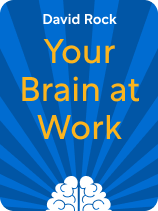

This article is an excerpt from the Shortform book guide to "Your Brain at Work" by David Rock. Shortform has the world's best summaries and analyses of books you should be reading.
Like this article? Sign up for a free trial here.
What’s dual-task interference? How is it keeping you from being more productive? Can you avoid it?
Dual-task interference is what happens in your brain when you multitask. This interference results in less efficiency and productivity. When you understand the science, you’re better equipped to keep this phenomenon from happening.
Keep reading to learn how to maintain your focus and increase your productivity by avoiding dual-task interference.
Dual-Task Interference
Your brain can be filled with innovative ideas and creative solutions, but, if you aren’t able to maintain the focus to implement them, you won’t be productive. Rock writes that the key to understanding focus is to recognize how the brain processes various tasks and apply strategies that support the brain’s system.
Most tasks at work require several different brain functions, and your focus shifts as you operate each one. Even a simple task like sending an email has many elements. For example, if you’re emailing a colleague about corrections you made on their project, you’re activating the network connected to your coworker, you’re recalling the changes you made, you’re considering your words carefully to minimize misinterpretations, you’re inhibiting your limbic system from making you anxious about sending feedback, and you’re physically typing. If you were to add a second task, like being on the phone, you’d double the list of functions that your brain now has to juggle.
Thus, if you need to do something accurately and creatively, Rock argues that you shouldn’t multitask. Neuroscientists have observed that, when you add a second task, your brain experiences dual-task interference, in which each task prevents the other from being done properly, and the efficiency and quality of both tasks are cut almost in half.
(Shortform note: Productivity experts echo Rock’s advice to avoid multitasking but note that sometimes, you have no choice, and you have to juggle different tasks simultaneously. To minimize the inefficiencies that come when your brain has to switch between different neural networks associated with different tasks, try to work on related tasks together—working on tasks that are similar will allow you to more fluidly alternate between them because the neural networks for each overlap.)
How to Use the Science
To avoid dual-task interference, Rock provides some approaches to keeping your brain focused on one task at a time.
Reduce distractions. Put your devices away when you’re trying to concentrate. Even the smallest distraction from a notification or a pop-up on the screen takes your attention away for a few seconds, and your brain has to expend extra energy to refocus. Turn off or silence your phone. If you need to be more responsive, set a timer to check notifications periodically.
| Dopamine Can Distract You Dopamine can boost your productivity by motivating you, but in Eat That Frog, Brian Tracey explains that dopamine can hinder your productivity when you multitask. If you’re working on a difficult task, your prefrontal cortex is expending energy to focus on this task. If a distraction comes in, such as, for example, your phone notifying you of text messages from a friend, your brain will release dopamine in response to the texts, which can pull you away from the difficult task. Thus instead of your brain being motivated to focus, it’s motivated to pay attention to the distractions. When a task is challenging or tedious, the smallest distractions can create dopamine that will chip away at your focus. While silencing your device or blocking your line of vision may seem like minor changes, doing so can make a significant difference. |
Follow a routine. Creating routines can help you keep your focus, as you don’t have to waste energy thinking about next steps. Even simple routines like the order in which you open your tabs at the start of work can ease your mind into a state of focus.
(Shortform note: According to James Clear’s Atomic Habits, you can create productive routines by being deliberate about your habits. Clear claims that as much as 50% of our daily activities are automated habits, so start by writing down habitual activity as you go about your day—including hitting the snooze button, brushing your teeth, and other small tasks—then reflect on what habits should be purposely arranged into a routine.)

———End of Preview———
Like what you just read? Read the rest of the world's best book summary and analysis of David Rock's "Your Brain at Work" at Shortform.
Here's what you'll find in our full Your Brain at Work summary:
- How leaders can generate productive work environments
- How to schedule your day around your brain's energy levels
- Three steps to reactivate your creativity after a creative block






